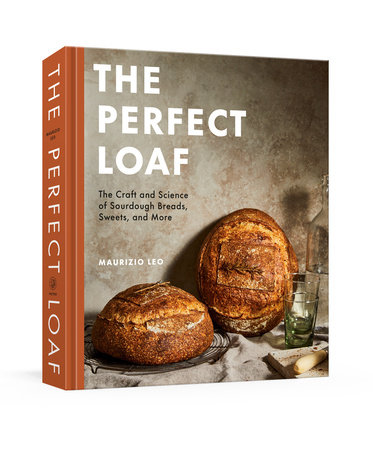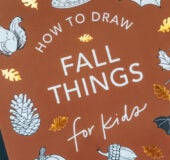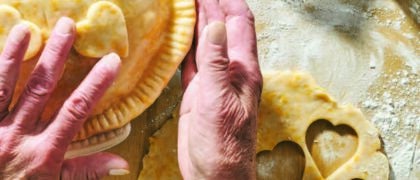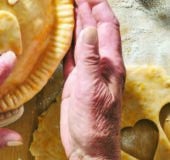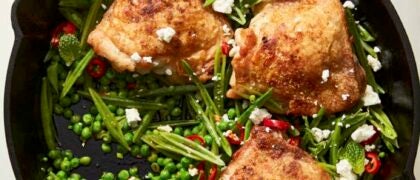IntroductionIt's early morning in my home kitchen and, as usual, I’m at the counter with my red grain mill loaded with wheat berries. I ready the hand-operated gristmill to produce fresh, fragrant flour for today’s dough as sunlight streams in through the windows. I smell the aromas of fresh flour and sourdough starter and feel a familiar mix of anticipation and early morning energy. This ritual kicks off a day structured around fermentation, mixes, folds, and shapes. An opportunity to connect my hands with a tangible output, a pathway for creativity and expression. In today’s world of notifications and keyboards and screens, the simple act of dunking my hands into a bowl containing only sourdough, salt, flour, and water—squishing and squeezing to combine the elementary ingredients—is utterly satisfying. A primordial contentment.
Made from three simple ingredients, bread doesn’t need to be complicated—they certainly didn’t have a digital thermometer in ancient Rome. The beauty of baking bread is it’s a craft that can be as deep and complicated as you want it to be. It can be as simple as mixing that handful of ingredients in a bowl, letting it ferment, and then baking it when ready. But it can be complex, too: Just talk to any longtime baker about their starter maintenance or levain builds and you’ll likely uncover a topic of great passion and intricacy.
As your baking experience increases, your proficiency and knowledge of every facet of the process grow deeper. Over time, even the seemingly smallest details, like what temperature your starter is kept at in the kitchen, or the angle at which you hold your bench knife to preshape dough, can become exciting areas of focus, opportunities for growth, or a chance to test something new. The entire act of baking becomes a playground, a place to satisfy a curiosity or express your creativity, all leading to the enjoyment you feel as you nourish yourself and others. And no matter your experience or your level of rigor, the resulting bread will almost always be delightful.
But what exactly is “the perfect loaf”? If you talk to ten different bakers, each will furnish a different story. Each will pause in thought, then proceed to talk about the crust, the crumb, the aroma, the flavor— a laundry list of distinctive qualities that attempt to pin down the loaf they are searching for, the loaf that might finally come out of the oven the next bake. For me, it’s the loaf that is light in hand with an open interior, a crunchy crust baked dark and menacing that shows all the colors between dark mahogany and light brown. It’s bread with just enough sourness from the natural fermentation to make your mouth water, with enough wholesomeness from whole grains to let you know this food is nourishing and honest. This list with these adjectives is constantly unfolding as my skill set evolves and expands, as experiments are performed and lessons learned—an endless pursuit of perfection that begins anew with every mix of flour and water.
In truth, I don’t think there is such a thing as a perfect loaf, but rather, it’s in the work toward that goal where the reward for baking truly lies: The small steps along the winding path, the valuable additions and revelations uncovered—that’s where we discover the joy in the smallest of details. The baker’s journey is replete with these moments of satisfaction: each time we get our hands dirty mixing flour and water, when we’re presented with a light and airy dough that’s just asking to be shaped, and that moment we pull loaves from the oven that have us gasp in contentment. Sure, there will be missteps along the way, loaves that didn’t rise how we wanted (or even at all), ones that tasted uninspiring, others with a dull and inert crust. But in every mix, every shape, every bake, there’s a lesson to be learned. And with each lesson, we’re a step further along our path. The joy is in the process, the discovery, endless exploration, and constant improvement. The result of our toil with fermentation, flour, hydration levels, and doughs of all kinds is the contentment seen on the faces of those with whom we share our bread.
Ultimately, baking sourdough bread is your own personal journey toward the bread you want to bake and enjoy, and this book is the result of my attempt to help you get there.
About Me, The Obsessed Sourdough BakerI grew up amid sacks of flour, cans of tomatoes, artichokes, and black olives, flour on the bench and in the air, the sounds of a giant mixing arm diving, spinning, and churning pizza dough. As a kid in my dad’s Italian restaurant, everything was something to explore, to taste, to take apart, a chance to learn something new. I was always surrounded by food made by hand, whether it was in our restaurant or at home with my mom and grandmother, making pasta from scratch or polenta “like we had in Italy.” This early exposure to the joys of cooking and baking stuck with me, even though I ended up going on to get a master’s degree in computer science. My engineering degree was in the complete opposite direction from cooking and baking, but it was a place for me to explore and tinker in a different way, appealing to my love of precision, algorithms (they’re recipes, after all), and experimentation.
After nearly a decade of being a software engineer, I serendipitously found my way into baking sourdough bread after reading Chad Robertson’s
Tartine Bread. His story and description of naturally leavened bread—sourdough, a breathing and living thing—captivated my scientific side and my appreciation for dedicating yourself to a time-honored craft. My baking was further influenced by experts such as Dave Miller (for his use of sourdough, freshly milled flour, and whole grains), Jeffrey Hamelman (whose sheer breadth of baking knowledge and willingness to teach others are inspiring), and Ken Forkish (for writing a pragmatic book for the home baker who is filled with questions and scientific curiosities). These bakers helped evolve my idea of what it means to make real, honest bread. Many of the techniques I use now grew from what I learned from these bakers, and it’s safe to say my baking wouldn’t be where it is today without their instruction and inspiration—to them (and many others) I owe my thanks.
In 2012, I launched The Perfect Loaf, my website dedicated to naturally leavened bread. I created the website to document my sourdough baking experiments and to help others learn from my discoveries in the home kitchen. The site has given me the opportunity to connect with many inspiring bakers from around the world, learning from their styles of baking and sharing mine—sourdough bread baking never ceases to be an area for study, discovery, and even debate. The bread-baking community is a special lot made up of people from all walks of life, a generous and caring bunch who’ve discovered this craft in one way or another, and found themselves equally as gripped as I am.
Since creating my first sourdough starter more than a decade ago, the world of science in that little jar has kept me fascinated with baking sourdough bread. It’s been a way for me to engage my scientific side and reconnect with my roots in food. I’ve been baking sourdough ever since, in an ever-increasing quantity, and these days so much so that I might as well be running a bakery from my home. This book is the culmination of all my sourdough trials, experiments, classes, research, and countless interactions with bakers at all levels over the past decade. My hope is that after you read it you will approach sourdough baking with the same unending curiosity and eagerness I do—there are endless avenues for exploration, learning, and satisfaction when baking sourdough from home.
This book will help you find your way down the path of breadmaking and jump-start the discovery of your own style of sourdough bread. And regardless of just how winding or crooked your path is, it doesn’t hurt that the result of each experiment is a loaf of incredibly delicious and nutritious bread.
Copyright © 2022 by Maurizio Leo. All rights reserved. No part of this excerpt may be reproduced or reprinted without permission in writing from the publisher.





